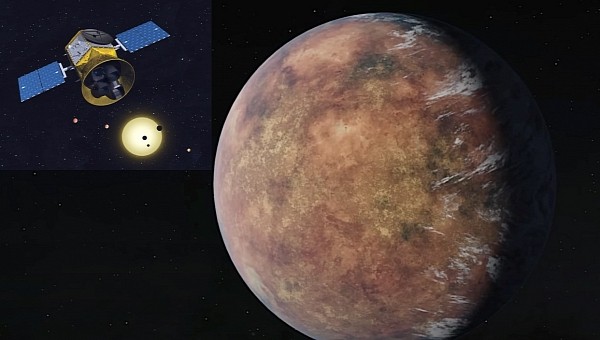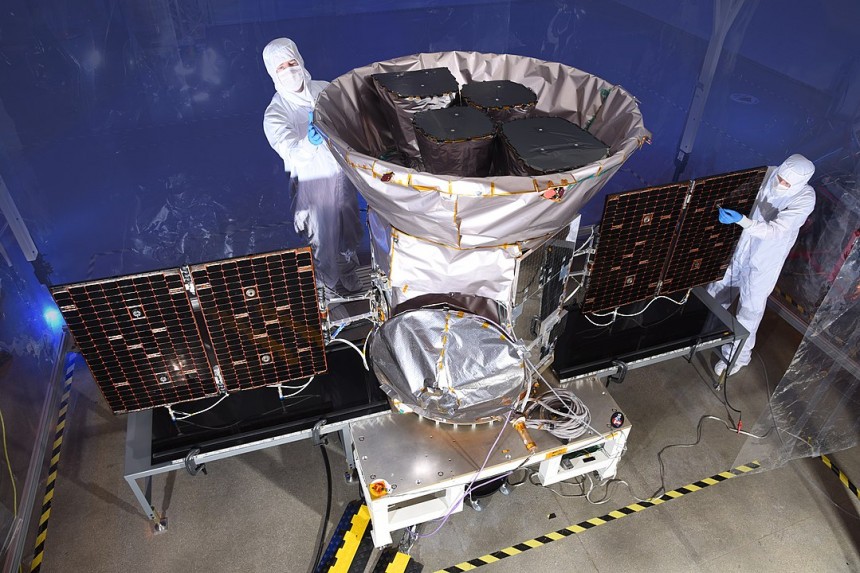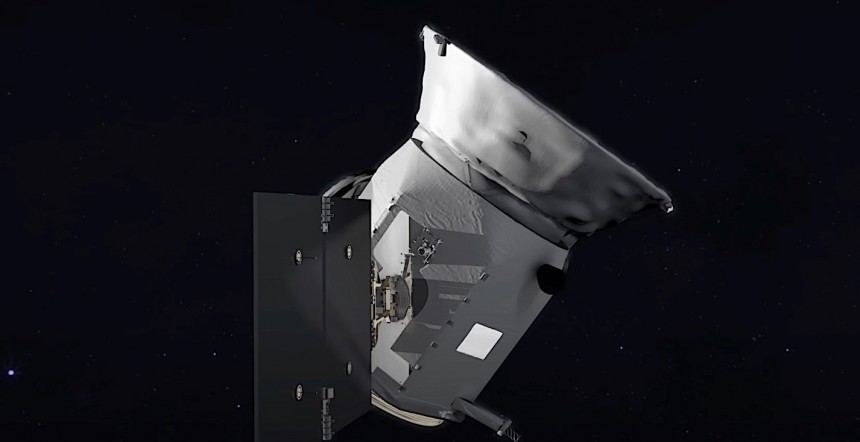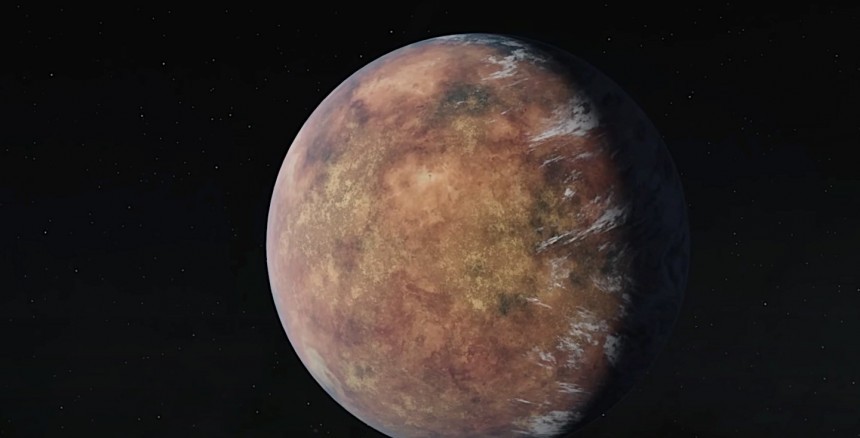Thus far, NASA, the ESA, and all the world's space agencies have located in excess of 3,000 interstellar planet systems and 5,000 "exoplanets" orbiting around these spectacular groups of mother stars. But there's a definite hierarchy when it comes to the planets that scientists prioritize as the most important.
Of these thousands of exoplanets, only a little over a dozen are located in what we like to call the habitable zone. Essentially a planet located in orbit around its home star where not too close to be incinerated but also not so far away that liquid water doesn't have a hope of flowing, just like the Earth. Well, NASA can now chalk up yet another name onto that shortlist.
Say hello to TOI 700e. A recently discovered interstellar planet roughly 95% the size of Earth, which takes a brisk 28 days to orbit its mother star. As far as scientists can tell, the planet appears to have a solid, rocky surface which water could potentially flow over. Thanks to one of NASA's underappreciated flagship space probes, we're only now learning of yet another planet on which life could potentially evolve. This, of course, would be the Transiting Exoplanet Survey Satellite (TESS).
The TESS Satellite was launched aboard a Falcon 9 Block 4 booster rocket from the Cape Canaveral Space Force base in Florida on April 18th, 2018. It was built in collaboration between NASA and the Massachusetts Institute of Technology and with funding from Google. Since its deployment for scientific study in July of that year, TESS has spent its time scanning for a specific set of stars most likely to play host to exoplanets in its orbit.
These stars are G-type main sequence, K-type dwarf stars, and M-type red dwarfs, all emit massive levels of energy across a broad array of spectrums. With a stable orbit that circumnavigates the Earth at nearly twice the rate of the Moon at a perigee of 108,000 km (67,108.08 mi). TESS is in a prime position to use its LEO-Star-2 Satellite Bus and Wide Field View cameras and sensors to provide an unparalleled look at far-off star systems.
A total of 16 megapixels are at hand in TESS's suit of MIT-developed wide-field imaging cameras onboard, which might not seem all that impressive. Lots of smartphone cameras easily exceed this photographic horsepower, even some budget phones too. But TESS's world-class sensor array is designed purposefully optimized to detect the shadows and thermal signatures of the host planets orbiting around their respective stars, even where past NASA probes like Kepler couldn't find anything.
The end result is a spacecraft that's scanned at least 85% of the cosmos within its visual range and managed to locate a planet located in its respective solar system's Goldilox zone for the second time. TOI 700e's sister planet, 700d, was also recently discovered by NASA and also determined likely to have a rocky surface in a prime spot away from its home star to harbor liquid water over the top of it.
Not that liquid water is the only factor NASA uses to determine their interest in exoplanets. Mitigating factors like a detectable and substantial atmosphere, a measurable magnetic field, and a planet's location within a local asteroid/comet debris field are just the highlights of the stringent and often time-consuming analysis processes involved in identifying exoplanets.
But not every suspected exoplanet the TESS spacecraft identifies is guaranteed to harbor ET, have a rocky, solid surface, or even be a planet at all. With a not unsubstantial confirmed total exoplanets found numbering 268, 1,720 suspected matches turned out to be buzz-killing false positives. That's nearly six and a half times fewer confirmations than false positives.
Still, new insights into how solar systems form potentially habitable planets ultimately only serve to further our understanding of neighbors closer to home. The established definition of a planetary habitable zone doesn't necessarily involve active, flowing water in the present day. Even planets that harbored liquid oceans billions of years ago, yet still orbiting within conditions for water to one day flow again, is still a top priority for NASA.
A derelict planet that had water billions of years ago and lost it? That sure sounds familiar. Jokes aside, should humans make it to Mars in the next two decades, scientists are hoping whatever findings are uncovered about the origins of liquid oceans on the Red Planet mimic the data we're currently unraveling from planets like TOI 700e.
Though physical exploration of such a far-off planet is a no-go at this stage, expect the next generation of highly powerful space telescopes to study the planet and its home solar system closely over the coming decades. Meanwhile, NASA, ESA, Russian, and Chinese spacecraft are under development to prove definitively if liquid water exists in our home star system.
The evidence is mounting every single day that the answer to this question is a resounding yes. Whether that improves the over/under on real little green men is anyone's guess. In truth, whatever form we do find life on other worlds is bound to either be tiny bacteria or something beyond even the realm of science fiction.
Check back for more space news here on autoevolution.
Say hello to TOI 700e. A recently discovered interstellar planet roughly 95% the size of Earth, which takes a brisk 28 days to orbit its mother star. As far as scientists can tell, the planet appears to have a solid, rocky surface which water could potentially flow over. Thanks to one of NASA's underappreciated flagship space probes, we're only now learning of yet another planet on which life could potentially evolve. This, of course, would be the Transiting Exoplanet Survey Satellite (TESS).
The TESS Satellite was launched aboard a Falcon 9 Block 4 booster rocket from the Cape Canaveral Space Force base in Florida on April 18th, 2018. It was built in collaboration between NASA and the Massachusetts Institute of Technology and with funding from Google. Since its deployment for scientific study in July of that year, TESS has spent its time scanning for a specific set of stars most likely to play host to exoplanets in its orbit.
These stars are G-type main sequence, K-type dwarf stars, and M-type red dwarfs, all emit massive levels of energy across a broad array of spectrums. With a stable orbit that circumnavigates the Earth at nearly twice the rate of the Moon at a perigee of 108,000 km (67,108.08 mi). TESS is in a prime position to use its LEO-Star-2 Satellite Bus and Wide Field View cameras and sensors to provide an unparalleled look at far-off star systems.
The end result is a spacecraft that's scanned at least 85% of the cosmos within its visual range and managed to locate a planet located in its respective solar system's Goldilox zone for the second time. TOI 700e's sister planet, 700d, was also recently discovered by NASA and also determined likely to have a rocky surface in a prime spot away from its home star to harbor liquid water over the top of it.
Not that liquid water is the only factor NASA uses to determine their interest in exoplanets. Mitigating factors like a detectable and substantial atmosphere, a measurable magnetic field, and a planet's location within a local asteroid/comet debris field are just the highlights of the stringent and often time-consuming analysis processes involved in identifying exoplanets.
But not every suspected exoplanet the TESS spacecraft identifies is guaranteed to harbor ET, have a rocky, solid surface, or even be a planet at all. With a not unsubstantial confirmed total exoplanets found numbering 268, 1,720 suspected matches turned out to be buzz-killing false positives. That's nearly six and a half times fewer confirmations than false positives.
A derelict planet that had water billions of years ago and lost it? That sure sounds familiar. Jokes aside, should humans make it to Mars in the next two decades, scientists are hoping whatever findings are uncovered about the origins of liquid oceans on the Red Planet mimic the data we're currently unraveling from planets like TOI 700e.
Though physical exploration of such a far-off planet is a no-go at this stage, expect the next generation of highly powerful space telescopes to study the planet and its home solar system closely over the coming decades. Meanwhile, NASA, ESA, Russian, and Chinese spacecraft are under development to prove definitively if liquid water exists in our home star system.
The evidence is mounting every single day that the answer to this question is a resounding yes. Whether that improves the over/under on real little green men is anyone's guess. In truth, whatever form we do find life on other worlds is bound to either be tiny bacteria or something beyond even the realm of science fiction.














